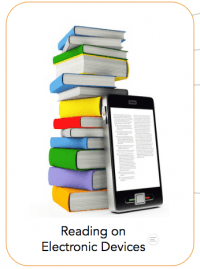
For the past 8 years, I’ve been working on a co-edited volume, Digital Pedagogy in the Humanities, that includes the stuff of teaching, syllabi, assignments, rubrics, that are often the unsung and often an invisible labor of our teaching jobs. To write a clear, concise, well-situated assignment prompt is an art form, especially considering that our students’ abilities and needs have experienced a profound shift in the last 10 years.
What am I talking about?
Those full-fledged computers we carry around in our pockets.
Or, the need for wifi at all places all over campus to research, write, engage.
Or, the network of friends we’ve all established in a virtual world.
In 2019, not just for our students, but in the U.S., we’ve hit a crisis point with all of the Facebook, Russian bots, artificial intelligence technological disruptions that have re-shaped our world significantly (see SJSU’s interaction with these topics through Deep Humanities & Arts).
When this connected and wired world began to encapsulate our campus at first, there was much talk that faculty may not understand these supposed “digital natives.” Slowly, however, everyone came to discover that the myth of the “digital native” was debatable. In fact, our students, as predominantly first-generation, under-served populations, were more likely part of the “digital divide.” In a recent Inside Higher Ed article, Mark Lieberman articulates those debates, including the supposition that “younger faculty” will have a better grasp on using and incorporating all things digital into the curriculum. But, as the existence of “digital natives” was debated vehemently, the real dilemma is that
[t]he concept of digital natives and multitasking could be a little bit of a red herring or at best a distraction from the [bigger] question that we need to be asking: How might the role of teaching and teaching practice change in an era when information is available instantaneously, but increasingly difficult to evaluate?
Research in multiple studies shows that the last two generations of students are high-functioning consumers and users of digital technology rather than fluent critical users of digital tools. If we can agree upon that premise, then, as faculty, instructors, librarians, instructional technologies, et al, we will be better prepared to teach our students about critical analysis of technology.
To do that, though, let’s take a step back. Before beginning the journey into digital pedagogy or integrating digital-based assignments or analyzing digital tools. How do we teaching students to read critically — let’s start with the printed word…using tactile books, articles, photocopied materials and a pen or pencil.
As the open educational resources movement has taken hold of all the CSU campuses (see Affordable Learning Solutions;“White Paper: OER Adoption Study: Using Open Educational Resources in the College Classroom), faculty are being encouraged to reduce textbook costs by using digital textbooks that are free or severely reduced in cost. That means moving students from reading the well-known print format (the codex) and annotating with pens and pencils.
So, we need to help them study from a digital textbook — transferrable skills that will eventually help students perform critique of their own favorite technologies. After all, someone had to teach readers how to move from the scroll to the codex format well before Gutenberg printed up the first book:
For this post, let’s slow down a bit (a la Slow Professor) and allow students a few sessions to re-learn some valuable skills:
Annotating a Page
This seems simple.
Students have likely learned annotation skills naturally in high school, right? Not so much. Students aren’t always engaged with their print textbooks through an ongoing dialogue (such as that demonstrated in the fiction book S (or Ship of Theseus) that integrates the conversation of two annotaters into a library copy of a novel as part of the narrative.
An engaging assignment early in the semester, before embarking upon your digital textbook or digital readings or online readings, might help with teaching students the value of annotation. I have used this strategy in two courses:
- Annotating a page from House of Leaves (a complex novel that anchored our Gaming & Narrative course)
- Annotating a page from a 19th-century rare book or periodical (an assignment accompanying our visit to Stanford’s Green Library collection to support our Digital Dickens course)
In one of SJSU’s Writing Across the Curriculum Faculty Workshops on the Annotated Bibliography, Alesya Petty spends time on how to teach students annotation skills when reading complex research articles (also introduced by Dr. Jennifer Johnson during the semester that I was engaged in this workshop).
We can inform or tell students how to annotate, but to ask them to ask actually annotate in the margins and then assess the queries that stem from their annotations is to model and then demonstrate the value of interacting with their own thoughts and the text on the page. The exercise provides students with a visceral remnant of their work and their intellectual labor, other than a product in the form of a written response to a reading that becomes physically disassociated from the material text.
For those who would like to demonstrate to students that annotation of a print text has most assuredly occurred even in our own library books — you might be interested to know about Book Traces, an ongoing effort to catalogue annotations in pre-1923 library books. We have A LOT here at SJSU! (My Digital Dickens class participated and added quite a few images of annotations from our library books.
Reading on Electronic Devices
After helping students turn their marginalia into impactful queries and annotations, I recommend providing your students with a primer on reading on electronic devices — for, you see, reading on a desktop screen, laptop screen, and mobile screen all create contingent mediations. Dr. Diego Bonilla (Sac State) takes a step back to articulate strategies for “Reading on Electronic Devices.”
Annotating a Digital Reading
There are some terrific tools and some not-so-terrific tools for annotating a digital reading or text. Paul Schacht, in “Annotation,” argues that
The attraction of annotation as a pedagogical tool is at least two-fold, presumably: by targeting attention at swatches of text, it should encourage close reading; and by putting the reader in conversation with the text’s creator, it should help to cultivate independent thinking and the habit of argument.
Digital annotation is capable of serving both these ends, but it is also capable of transforming the activities of close reading and independent thinking by transferring them from the private space of the physical text to the open, shared spaces of the Web. Online, annotators can build on one another’s insights, share contextual knowledge they find through research, and argue with each other as well as the text. Although some early modern readers used the margins of books as social spaces for the exchange of ideas, they could not do so at the speed and scale that the Web makes possible (Grafton and Jardine 30-31). Nor could they tag, sort, filter, and search annotations to seek meaningful patterns in the whole corpus of readers’ responses to a text.
Social annotation, even if not shared with a population other than the individual student, allows student readers to organize their thoughts.
Schacht offers several assignments and tools to guide students through social annotation of digital objects, including images and videos. Schacht also highlights the tool hypothes.is, a freely available tool that “superimposes annotation functionality on Web content wherever one finds it. It can even be used to annotate pdfs on the Web.” (See the hypothes.is Teacher Resource Guide or Pedagogy Playground’s more updated blog post on using hypothes.is for both faculty and students. See also how to annotate primary source material in digital form)
Information Literacy & Digital Literacy at SJSU
Even if the topic of your course is not necessarily digital literacy, you are already and always engaging in digital literacy by sheer virtue of our now-digital world (even if you only use Canvas or YouTube videos!).
Our Writing Across the Curriculum workshops offer a terrific opportunity to collaborate with faculty across multiple disciplines as well as investigate King Library’s wonderful resources and librarians (some of whom teach these workshops). The next engaging workshop on Information Literacy, taught by Lori Borchard, is coming up twice in March (Sign Up Link: https://goo.gl/forms/PoAmAzBM2i20xZ5h2):
March 1
Workshop: How to Embed Information Literacy Into Your Course: A Hands-On Workshop, 1:00PM-3:00PM, in MLK Library Room 213.
March 15
Workshop: How to Embed Information Literacy Into Your Course: A Hands-On Workshop, 9:00AM-11:00AM, in MLK Library Room 213.
With libraries in general as a window onto digital literacy, you might be interested in reading our very own Bernd Becker’s article, “Information Literacy in the Digital Age: Myths and Principles of Digital Literacy”
The more experienced among us in digital literacy, might enjoy explorations in teaching students to code as a form of advanced digital literacy, as demonstrated by an SJSU i-School graduate student: “Sylvia Aguiñaga Brings Digital Literacy to the Masses.”
SJSU’s i-School has long been a bastion of engaging conversations surrounding information and digital literacy. In case you’re wondering, librarians also get into the business of current U.S. political climates through information and digital literacy, as is exemplified through the i-Schools 2017 conference, “Library 2.017–The Future of Digital Literacy in Light of Fake Information” with a keynote by Dr. Bryan Alexander,“Digital Literacy + Fake News”:
What I’ve covered here today is by no means a full representation of digital literacy. In fact, I would wager that we all teach some form of digital literacy without even knowing it in all disciplines across SJSU. Some questions to consider in the take-away:
- How do we create a common vocabulary to address the issues that Bryan Alexander raises in his keynote in order to facilitate that conversation among our students across disciplines?
- How do we remember that our students may deal with “digital divide” more so than being “digital natives?”
- How can we leverage open access tools to facilitate our students’ digital literacy practices?
- How, then, can their newly acquired skills be integrated into the curriculum to allow them to critique technology in a useful way?
- Finally, how does that skill set prepare our students to investigate some of the current U.S. problems, issues, dilemmas, crises without necessarily retreating to any one disciplinary model?
We have many great facilities on campus to help with these queries. Check out some of those workshops or talk to your subject-area librarian for more help.
